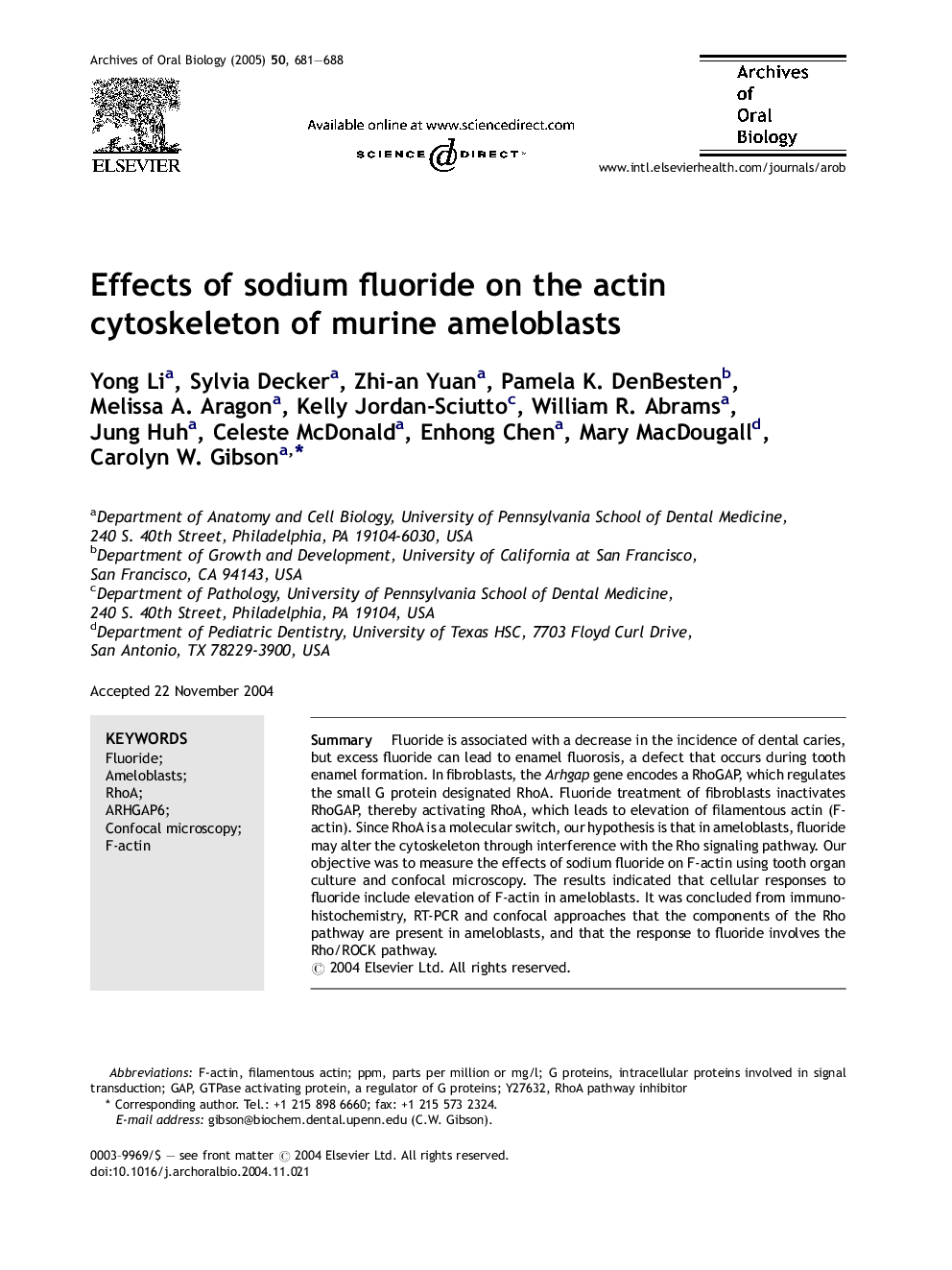| Article ID | Journal | Published Year | Pages | File Type |
|---|---|---|---|---|
| 9996661 | Archives of Oral Biology | 2005 | 8 Pages |
Abstract
Fluoride is associated with a decrease in the incidence of dental caries, but excess fluoride can lead to enamel fluorosis, a defect that occurs during tooth enamel formation. In fibroblasts, the Arhgap gene encodes a RhoGAP, which regulates the small G protein designated RhoA. Fluoride treatment of fibroblasts inactivates RhoGAP, thereby activating RhoA, which leads to elevation of filamentous actin (F-actin). Since RhoA is a molecular switch, our hypothesis is that in ameloblasts, fluoride may alter the cytoskeleton through interference with the Rho signaling pathway. Our objective was to measure the effects of sodium fluoride on F-actin using tooth organ culture and confocal microscopy. The results indicated that cellular responses to fluoride include elevation of F-actin in ameloblasts. It was concluded from immunohistochemistry, RT-PCR and confocal approaches that the components of the Rho pathway are present in ameloblasts, and that the response to fluoride involves the Rho/ROCK pathway.
Related Topics
Health Sciences
Medicine and Dentistry
Dentistry, Oral Surgery and Medicine
Authors
Yong Li, Sylvia Decker, Zhi-an Yuan, Pamela K. DenBesten, Melissa A. Aragon, Kelly Jordan-Sciutto, William R. Abrams, Jung Huh, Celeste McDonald, Enhong Chen, Mary MacDougall, Carolyn W. Gibson,
